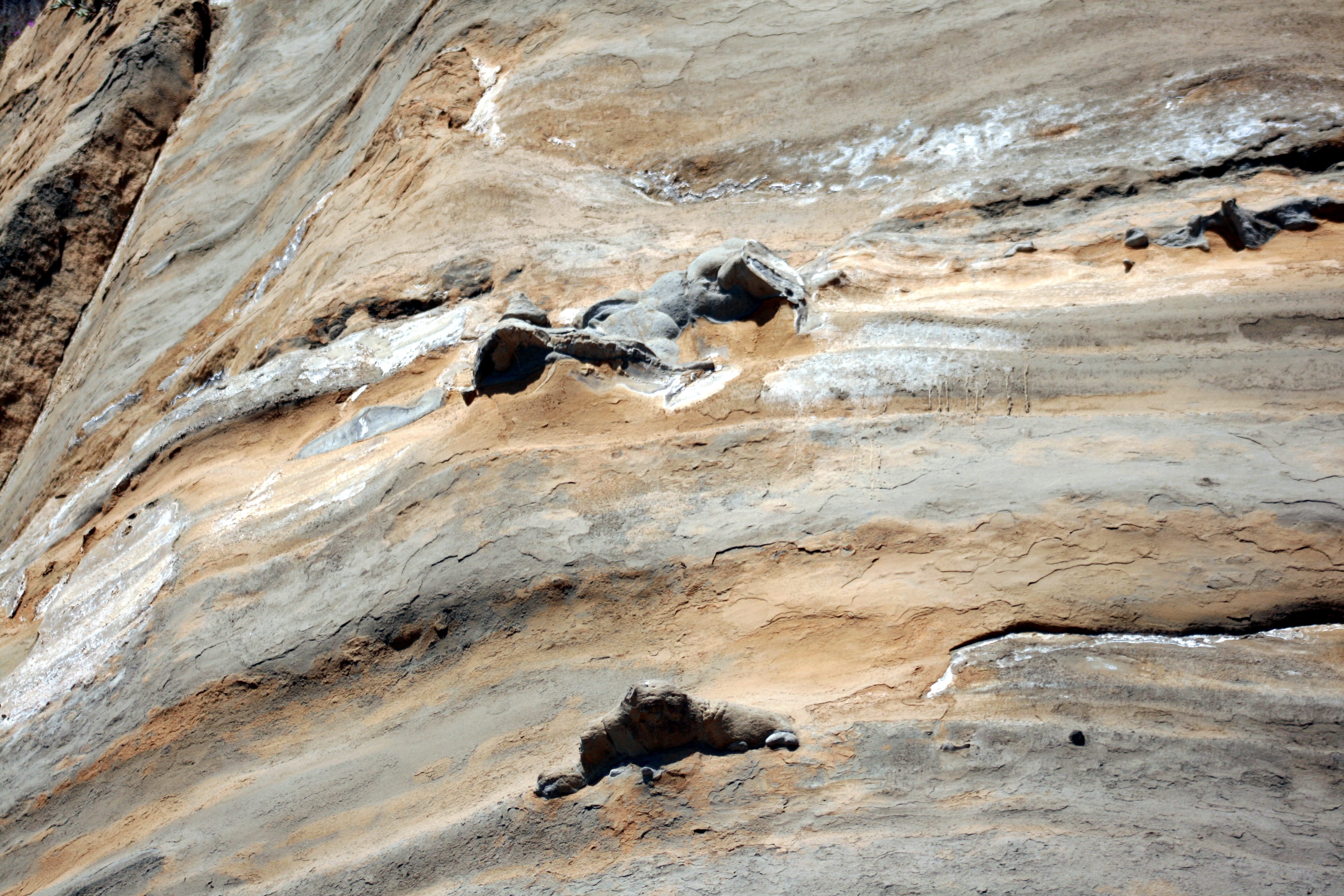The RFG2018 Conference Vancouver
This cache is a legacy cache placed for the Resources for Future Generations conference in Vancouver in the summer of 2018. The conference is the premier conference on energy, minerals, water and the earth. The cache shows how all things geological are intertwined, for example concretions hidden in a sandstone sequence.
Concretions
The rocks in front of you are part of the Tertiary sedimentary sandstone Kitsilano formation which was laid down roughly 30 million years ago. This exposure contains several concretions which is the subject of this earthcache.
A concretion is a hard, compact mass of matter formed by the precipitation of mineral cement within the spaces between particles, and is found in sedimentary rock. Concretions are often ovoid or spherical in shape, although irregular shapes also occur. The word 'concretion' is derived from the Latin meaning 'together' and meaning 'to grow'. Concretions form within layers of sedimentary strata that have already been deposited. They usually form early in the burial history of the sediment, before the rest of the sediment is hardened into rock. This concretionary cement often makes the concretion harder and more resistant to weathering than the host.
Descriptions dating from the 18th century attest to the fact that concretions have long been regarded as geological curiosities. Because of the variety of unusual shapes, sizes and compositions, concretions have been interpreted to be dinosaur eggs, animal and plant fossils or human remains.
Formation
Concretions form by the selective precipitation from ground water of dissolved minerals, most commonly calcium carbonate, the stuff of which limestone is made and an important component of concrete, toothpaste, and a host of other products. Siderite (iron carbonate or "ironstone") is also an important cement. As these minerals precipitate, they fill in pore spaces between grains of sediment thereby cementing them together. Concretions can be massive and structureless, or they may preserve fossils or internal sedimentary structures such as crossbeds. These concretions are structurless and were formed from calcium carbonate.
This particular exposure is very strongly weathered and soft. In fact, in some places it has weathered to sand.
The photo below shows typical concretions in a sandstone layer.

Logging
To log this earthcache stand on the metal grate or sidewalk, out of the way of bicycles, to make your observations and send the answers to the owner. Wrong answers will be deleted.
1. What size are the concretions and how many do you see.
2. Describe the shape and colour of the concretions.